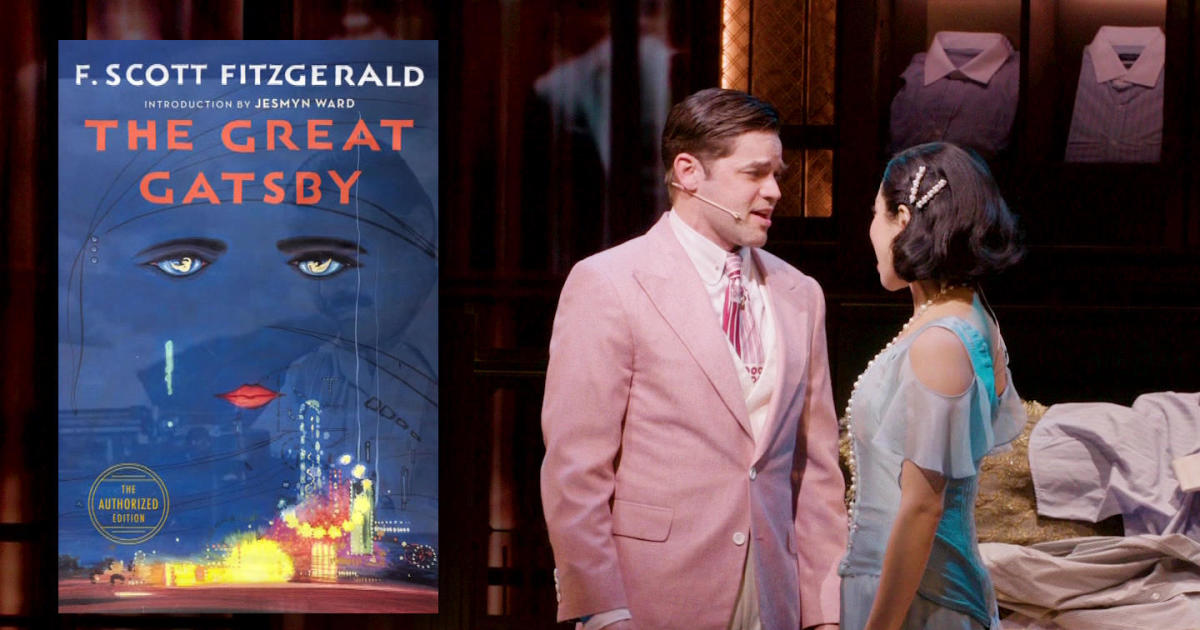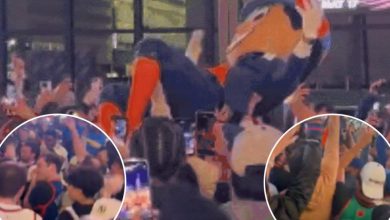
For nearly four decades, United Airlines allowed George Gershwin’s “Rhapsody in Blue” to become its musical identity. However, in 2020, Gershwin’s jazzy classic fell from the friendly sky – and landed in the public domain.
Which means that when the copyright expires, anyone is free to use and build on that work. “No fees, no licensing, no finding the owner, no permission,” said Jennifer Jenkins, director of the Center for the Study of the Public Domain at Duke University Law School.
She said there are many famous works that no longer belong to their creators — films like Charlie Chaplin’s “The Circus” and Fritz Lang’s “Metropolis,” books like “The Sun Also Rises” by Ernest Hemingway and people like Peter. Pan, Dracula and Frankenstein. They now all belong to Wethe public, free for anyone to use to create something new.
Jenkins said: “Public domain does not represent the death of copyright. This is simply the second part of the copyright life cycle. »
The idea of setting an expiration date on intellectual property was something the Founding Fathers actually had written into the U.S. Constitution, “…to promote the progress of science and useful arts.” However, they left it to Congress to decide the duration of copyright.
According to Jenkins, “If copyright lasted forever, it would be very difficult for many creators to create the works they want to make without fear of being in the crosshairs of a copyright lawsuit. »
F. Scott Fitzgerald’s “The Great Gatsby” was published in 1925. Anyone wishing to use elements of the novel, whether Robert Redford or Leonardo DiCaprio, had to obtain permission from the Fitzgerald estate, which owned copyright for 95 years.
Blake Hazard admits it’s long, but doesn’t think it’s too long. “Then again, this is my personal opinion, and I’m obviously biased,” said Hazard, Fitzgerald’s great-granddaughter and trustee of his estate.
When “Gatsby” finally entered the public domain in 2021, she saw a slew of Gatsby-like projects waiting at the starting line, including the “Nick” novels, a prequel by Michael Farris Smith; and “Beautiful Little Fools” by Jillian Cantor, and “The Chosen and the Beautiful” by Nghi Vo, which each tell the story of “Gatsby” through different characters.
“I always hope there will be some loyalty, but we have no control over that,” Hazard said. “So we just have to accept that.”
She’s just been invited to a new post-copyright adaptation of her great-grandfather’s work – a “Great Gatsby” musical that opens on Broadway this month. “I hope it’s ok !” she laughed.
Series writer Kait Kerrigan said, “We didn’t want to do something very different from the novel. We wanted to add perspective and layers to the novel.”
Director Marc Bruni said: “Any group of artists will distill a story through their own lens. »
The truth is that most works are not as likely to be economically viable as long as those of F. Scott Fitzgerald, Ernest Hemingway, or even Walt Disney.
This year, “Steamboat Willie,” which released two of the most lucrative rodents in history, entered the public domain. To be clear, however, don’t use modern Mickey or Minnie, as they are still under copyright; it’s only the version as it first appeared that is fair game.
Yet as soon as those early copyrights expired, we got this: a Mickey slasher film, “Mickey’s Mouse Trap.” The same thing happened when AA Milne’s Winnie-the-Pooh entered the public domain: the highly unrated “Winnie-the-Pooh: Blood and Honey.”
Walt Disney Pictures; In executive productions
This is the kind of reimagining that many fields fear.
Sherlock Holmes is one of the most recognized literary characters of the 19th century, but the estate of Sir Arthur Conan Doyle began to see his copyrights expire in the 1980s. Nevertheless, the estate of Conan Doyle continued to claim licensing fees, arguing that since some of the later Sherlock Holmes stories were still copyrighted, they should still own the rights to all the characters.
Author Les Klinger, a leading Sherlock Holmes scholar, said: “At some point, enough is enough. »
In 2013, Klinger was about to release a supposedly royalty-free adaptation of the detective, titled “In the Company of Sherlock Holmes,” when this happened: “The estate contacted this publisher and said, ‘You have need a license,’” Klinger said. . “And we told the editor, ‘No, it’s not.’ We just thought it was wrong, absolutely wrong, and it made us very angry.”
So Klinger filed a civil suit in Federal Court…and he won. “They didn’t give up easily,” he said. “They were trying to squeeze all the juice they could out of those lemons until they had no copyright left.”
Jennifer Jenkins of Duke University said: “Copyright gives creators and their descendants rights that encourage them to create. But the public domain is truly the terrain of future creativity. »
There will surely be more copyright disputes to come. Characters like Bugs Bunny, Superman and Batman will soon all find themselves outside of copyright protection.
Even Luke Skywalker will eventually end up in the public domain as well, around 2073. That certainly sounds like a galaxy far, far away.
For more information:
Story produced by Mark Hudspeth. Editor: Ed Givnish.
Grub5







